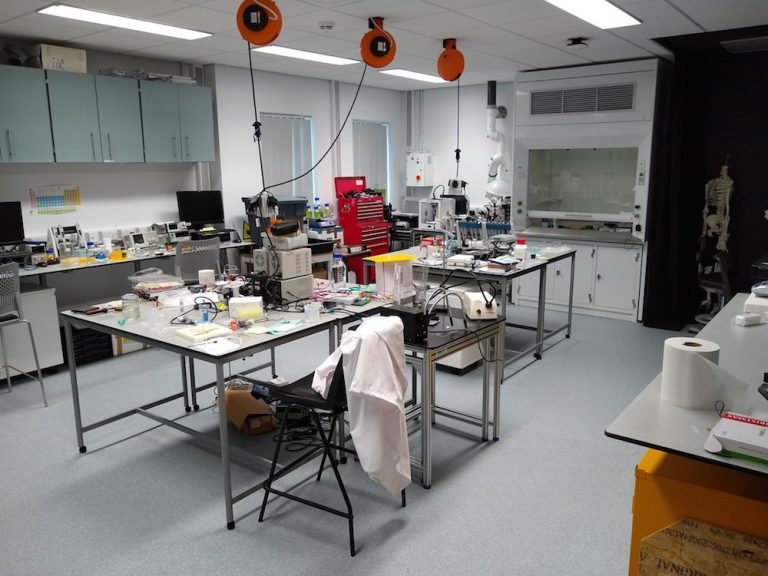Mold computer developed in England – Apparata
A remarkable English lab is researching the use of fungi as a means to perform calculations. Does the mold computer have a future?
Contents
A remarkable lab
You will probably only find an eccentric lab like this in England. The Unconventional Computing Laboratory at the University of the West of England, in Bristol, England, looks perfectly normal at first glance. Until you take a closer look at the computers. Because some are overgrown with all kinds of fungi, including those of well-known mushrooms such as the oyster mushroom. The fungi are an inseparable part of the computer. Thus, they take on tasks such as storing information and receiving, conducting and transmitting electrical signals.
The researchers’ method is simple. They take a container with wood chips or another substrate, food for the fungus, and inoculate it with pieces of mycelium flake. They grow and invade the substrate. At that point, the study begins and the researchers place electrodes. The mold computer in rudimentary form is active.
Fungus computer and the “wood wide web”
For some time now, theories have been known about fungi as the connecting cables of a biological internet, the “wood wide web”. Indeed, mycelium exhibits electrical behavior that resembles a network of brain cells. For example, just like in neurons, ‘spikes’, short peaks of electrical voltage, occur and the mycelium can transmit these peaks. Obviously this computer is much slower than the computers we work with now. The advantage is that the computer is very energy efficient.
Fungus computer still in exploratory phase
So far they have worked with a kind of oyster mushroom (Pleurotus djamor), the (luminous) ghost mushroom (Omphalotus nidiformis), resin snail mushroom (Ganoderma resinaceum), velvet foot (Flammulina velutipes), the fan (Schizophyllum commune) and the caterpillar killer (Cordyceps militari) .
At the moment, the lab’s work is still in the exploratory phase. The various, strongly deviating, fungal species mentioned above are tested to what extent they are suitable for calculations and logic operations, and how they behave as part of a circuit.
What can you do with it?
The most interesting application seems to be for the time being to tap and read the “world wood web”. In the Fungal Architectures project, the lab explores the possibilities of using a fungus as a building’s home automation computer. This would be much more robust than electronic equipment. You don’t have to worry about EMP with a fungus. Whether this will all work is, of course, the question. But the research idea is very original and can probably lead to many new insights and discoveries.



